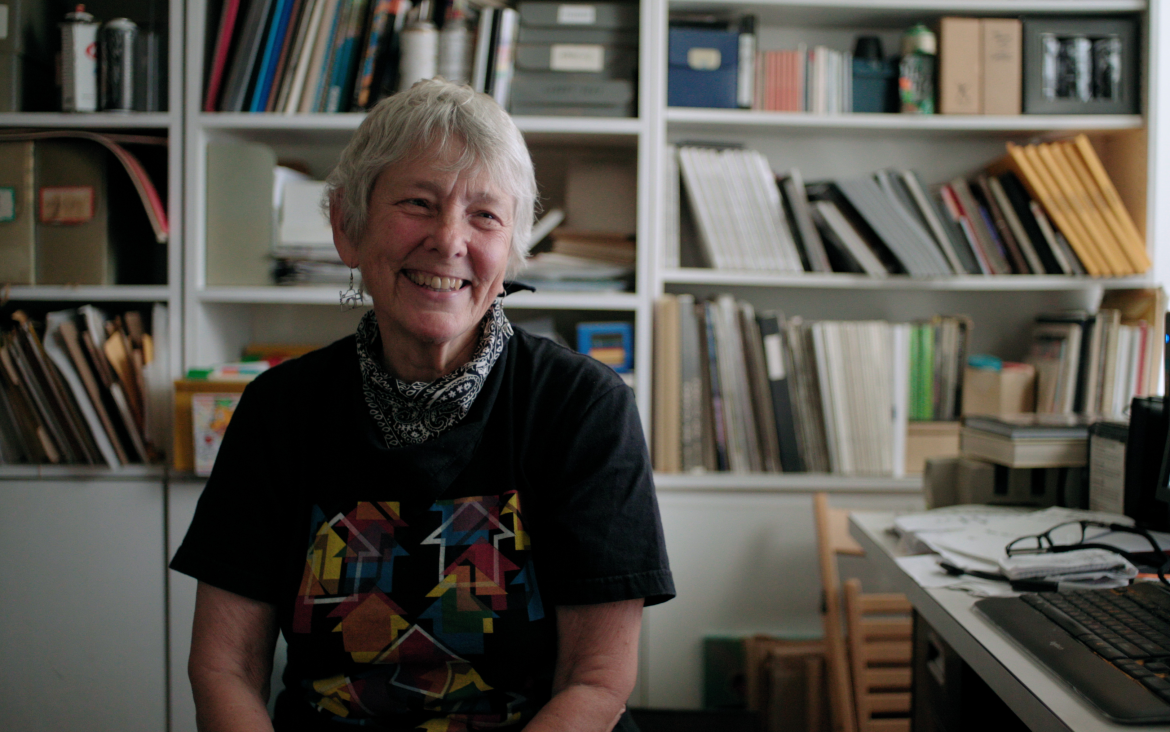Martha: A Picture Story opens with scenes of an older woman calmly putting batteries into a camera, turning up the hood of her black hoodie, and heading out into the night. She meets a group of masked young men, their voices obscured and faces blurred. They proceed to break into Berlin’s U-Banh to graffiti the subway and the trains, while she documents their every move.

It’s a wild opening that is only the latest act of a wild life, as Selina Miles’s remarkable, at-times hilarious, and always fascinating film chronicles. Photographer Martha Cooper is a legend among graffiti artists for her book Subway Art, a chronicle of graffiti art and culture in the New York City subway during the 1970s and 80s. But she’s far more than one book, as the film depicts: a photographer constantly on the lookout for the next adventure, for the next indelible image, she exists outside of the mainstream by choice. Beyond simply giving a biographical narrative of Martha’s life, from her early interest in photography to her Peace Corps days and her acceptance in, and documentation of, New York’s graffiti culture, Martha: A Picture Story presents a multifaceted view of a woman who moves at the edges of society to find the beauty of humanity, in their art and in their daily lives. The film combines interviews with Martha, her friends and fellow artists, and the people she chronicled, including a number of American and European graffiti artists who found documentation and inspiration in her work.
Martha: A Picture Story stops short of treating Martha’s work with nostalgia. Even as she and others remark that she took pictures of a time and place that is long since passed, there is the tacit acknowledgment that graffiti as it was in New York was not seen as a high art, but as an act of vandalism, an artistry born from danger, poverty, and neglect, as young boys and girls risked their lives to tag subway cars, to create beautiful art that they knew would never endure. The film itself is nostalgic only in the sense that it depicts the vibrancy of the culture Martha documented—we can’t go back to that not because New York has changed, but because time passes no matter what we do. But Martha was there to preserve it and to provide illumination and inspiration for another generation, even if she didn’t know it at the time.
Now well into her seventies, Martha continues to seek out the marginalized and takes her camera to Baltimore and a neighborhood on the edge of gentrification but still enmeshed in poverty. As with her graffiti photography, she sees beauty in the people and the places she covers, and documents the intense, beautiful, vibrant world, often unseen, that exists at the margins. There is no sense that she believes she’s doing a public service; there’s no condescension, either in her work or in the film’s treatment of it, to imply that she’s “bringing light” into dark corners or treating the people she photographs as objects rather than subjects. Rather, this is what she sees, the essence of a humanity that is often ignored, lambasted, or rejected. As one gallery owner in New York rejects her images of people smiling (because it’s not “art”), Martha is fairly sanguine: her images are real, not posed or created for an art show, and people smile at cameras.
The film maintains its focus on Martha as its driving force, evading what some documentaries do in slipping off on editorial or historical tangents. And she’s a delightful screen presence, thoroughly her own person, who didn’t reject success (in fact, wanted it a great deal) but also refused to compromise what she could takes pictures of and what she couldn’t. In this, she’s an inspirational, aspirational figure for what an artist can do and become.
Martha: A Picture Story is appearing in Tribeca’s “This Was New York” slate, an appellation that dangerously courts a nostalgia for the city’s past. But in evading nostalgia, this documentary does something even better, remarking on the past through the eyes of someone who saw it and documented it with the full awareness that it would change someday. The fundamentals of human endeavor and artistry remain in the images, a reminder of the combined mutability and stability of art. She made the transient permanent, turning one form of art into another, just as this film does.
Martha: A Picture Story is currently at the Tribeca Film Festival.
FOLLOW US ON: FACEBOOK, TWITTER
WANT TO SUPPORT ORIGINAL CONTENT CREATED BY WOMEN? THEN CONSIDER SUPPORTING CITIZEN DAME ON PATREON!
Interested in contributing your writing (either pre-written or original) to Citizen Dame? Consider joining our guest contributor program
